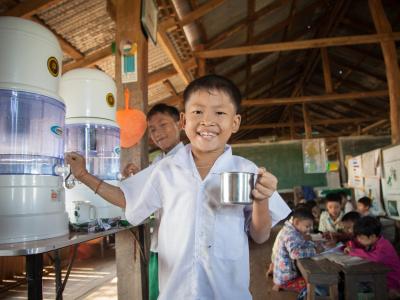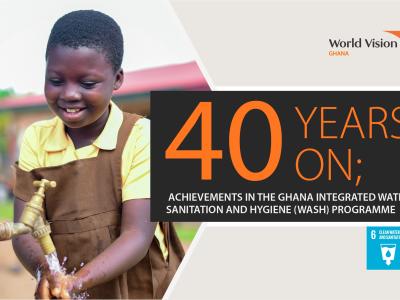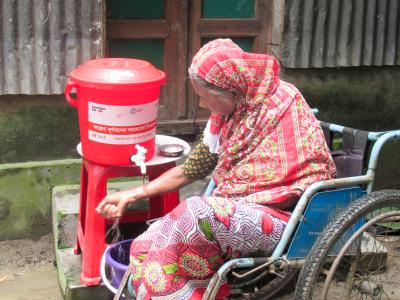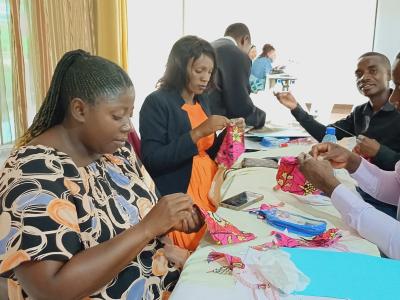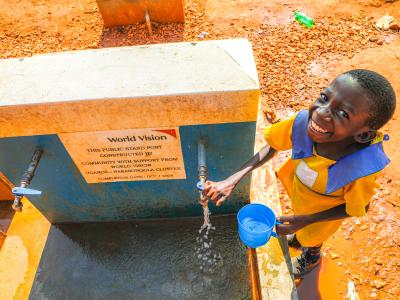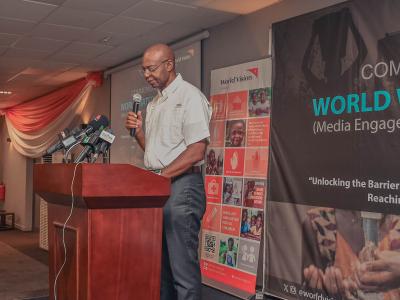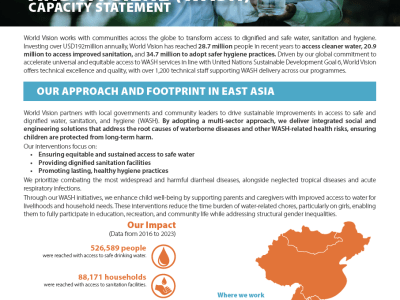publication / February 18, 2025
40 YEARS ON; ACHIEVEMENTS IN THE GHANA INTEGRATED WATER, SANITATION AND HYGIENE (WASH) PROGRAMME
In our ongoing quest to improve access to Water, Sanitation, and Hygiene (WASH) a fundamental necessity for safe, healthy living and the socio-economic development of communities, World Vision Ghana has implemented a number of impactful interventions.
publication / March 20, 2025
Inclusive Pathways to Climate-Resilient WASH
Climate change worsens the global WASH crisis, especially for people with disabilities, who are often neglected in climate plans. This study, a collaboration by LSHTM, icddr,b, and World Vision in Bangladesh, developed principles for inclusive, climate-resilient WASH by analysing impacts and conducting participatory research.
article / March 21, 2025
Why Do We Celebrate Access To Water and Sanitation While Considerable Challenges Persist?
As part of the World Water Day, World Vision Mozambique reflects around its contribution to increase the number of people with access to clean water and proper sanitation, particular among women and adolescent.
article / March 17, 2025
Equipping Teachers, Empowering Girls: Strengthening Menstrual Hygiene Management in Schools
For many girls in rural Zambia, managing menstrual hygiene at school has long been a challenge, often leading to absenteeism and reduced academic performance. However, through World Vision Zambia’s Water, Sanitation, and Hygiene (WASH) program, change is taking root. By training teachers and equipping students with essential hygiene knowledge, the program is creating a more inclusive and supportive learning environment, ensuring that no child is left behind due to preventable hygiene-related issues.
article / April 5, 2025
WORLD VISION BRIDGES WATER SCARCITY IN NAKASONGOLA DISTRICT
World Vision has installed 2 motorised water systems worth 3.2B UGX) in Nakasongola distirct, serving 22K+ people. Children no longer miss school fetching water. Clean water now in schools, health centers & villages, cutting disease & boosting education.
article / March 28, 2025
World Vision Ghana Calls for Urgent Action on Water Preservation
World Vision Ghana reaffirmes its commitment to ensuring access to clean and safe drinking water for all, as it joined global partners to commemorate World Water Day 2025.
publication / January 9, 2025
East Asia Capacity Statement | Water, Sanitation & Hygiene
Investing over USD192 million annually, World Vision has reached 28.7 million people in recent years to access cleaner water, 20.9 million to access improved sanitation, and 34.7 million to adopt safer hygiene practices.
